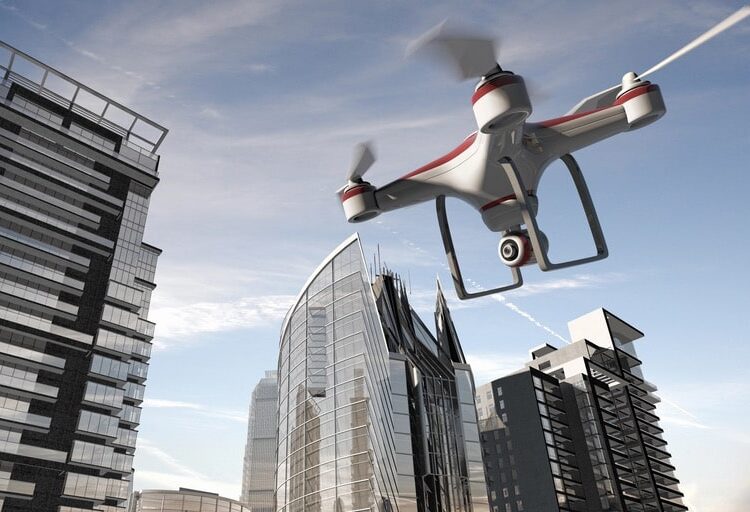The landscape of defense technology is rapidly evolving, with aerial surveillance taking a front seat in modern military strategies. The advent of uncrewed aerial vehicles (UAVs), equipped with advanced sensors and capabilities, marks a significant leap forward in how security and tactical operations are conducted globally.
These technologies provide greater coverage and stealth and deliver critical data that enhances decision-making processes. Advanced drones, like Skydio X10D Drone, are now pivotal assets in national defense arsenals, offering unprecedented precision and reliability.
High-Capacity Drones for Enhanced Tactical Awareness
The introduction of high-capacity drones has revolutionized defense surveillance. Drones like the Skydio X10D are equipped with sophisticated imaging and sensory technologies that allow military personnel to obtain real-time, high-quality video and data.
These capabilities enable forces to maintain a continuous battlefield overview, enhancing situational awareness and tactical responses. Enhanced tactical awareness means that military strategies can be adjusted dynamically based on accurate, timely information, resulting in more effective operations with a higher success rate.
Using them in existing military networks allows for seamless data sharing across various platforms, enhancing collaborative decision-making. These systems’ robustness in diverse environmental conditions ensures reliable performance in critical missions. Their ability to autonomously execute complex maneuvers and missions reduces the cognitive load on operators, allowing them to focus on strategic decision-making processes.
Advancement in Stealth Technology
Modern aerial surveillance UVAs have stealth in accessibility to employ technologies that minimize their visibility and radar signature. This advancement allows them to operate in hostile environments without easily being detected, providing a strategic advantage in surveillance and reconnaissance missions.
Stealth capabilities ensure that they can gather critical intelligence on enemy movements and fortifications, contributing significantly to mission success while preserving the element of surprise. Moreover, the materials used in constructing these UVAs, such as radar-absorbent coatings and specialized geometries, further reduce detectability.
These stealth features are complemented by quieter propulsion technologies, reducing acoustic signatures and enhancing their ability to operate unnoticed.
Integration with Artificial Intelligence
Artificial intelligence (AI) plays a crucial role in the next generation of aerial surveillance. AI algorithms are used to analyze the vast amounts of data they collect, automating processes like target recognition and behavior analysis. This integration speeds up the data processing and enhances the accuracy of intelligence reports.
AI-driven UVAs can identify threats faster and more precisely, enabling defensive measures to be enacted swiftly and efficiently. AI allows them to learn from each mission, continuously improving their algorithms and adapting to new adversaries’ tactics, enhancing their operational effectiveness over time.
Enhanced Communication Systems
The effectiveness of aerial surveillance UVAs also hinges on their ability to communicate seamlessly with ground, air, and naval forces. Enhanced communication systems facilitate the relay of vital information between the drone and command centers, ensuring timely and actionable data.
These systems support a network-centric approach to warfare, where every unit is interconnected, significantly improving coordination and strategic planning across all marketing branches. Sophisticated encryption methods protect these communications, ensuring they are secure from enemy interception and cyber threats, which is critical in maintaining operational integrity.
Sustainable Operations and Maintenance
Sustainability in drone operations involves the efficient use of resources and the minimization of operational downtime. Next-generation drones are designed for longer flight times and easier maintenance, ensuring they can perform extended missions without frequent recharging or repairs. This reliability is crucial in defense scenarios, where prolonged surveillance is often necessary to secure a strategic advantage.
Advanced materials and modular designs also facilitate quicker repair and maintenance, reducing logistical challenges and enabling drones to be rapidly redeployed. Furthermore, these sustainable practices contribute to the cost-effectiveness of drone operations, maximizing the return on investment while maintaining high operational readiness.
Multi-Domain Operation Capabilities
As the theatres of war become increasingly interconnected across the land, sea, air, and cyber domains, the next generation of aerial surveillance drones is being engineered to operate across these varied environments seamlessly. These drones have multi-domain sensors and systems that simultaneously collect and synthesize data from multiple sources, providing a holistic battlefield view.
This multi-domain capability ensures that military forces maintain comprehensive situational awareness, facilitating quick and effective decision-making. Additionally, these drones can coordinate with other assets across different domains to execute complex, integrated operations.
This capability is critical for modern warfare strategies that require rapid adaptability and precise execution across various environments, further enhancing the effectiveness of military operations on a global scale. Rapid advancements in drone technology mark the future of aerial surveillance in defense.
High-capacity drones, equipped with stealth capabilities, artificial intelligence, and enhanced communication systems, are reshaping the battlefield, providing forces with superior tactical awareness and strategic options. These technologies will further integrate into defense strategies as they evolve, offering more robust and effective surveillance solutions that safeguard national security.
The ongoing development and deployment of innovative aerial surveillance technologies, such as the Skydio X10D, signify a new era in military capabilities, promising greater efficiency and precision in future operations.



